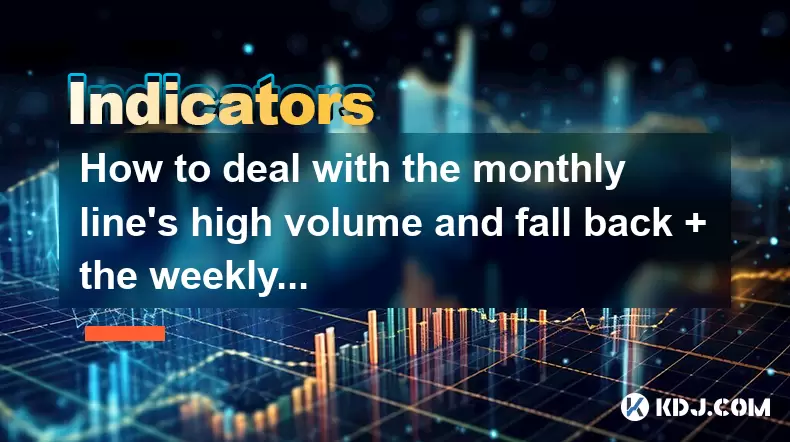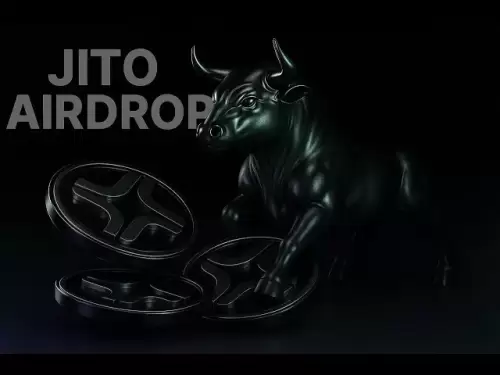-
 Bitcoin
Bitcoin $118600
0.36% -
 Ethereum
Ethereum $3855
1.06% -
 XRP
XRP $3.195
-0.09% -
 Tether USDt
Tether USDt $1.000
-0.04% -
 BNB
BNB $844.5
6.23% -
 Solana
Solana $191.3
2.83% -
 USDC
USDC $0.9997
-0.01% -
 Dogecoin
Dogecoin $0.2376
0.10% -
 TRON
TRON $0.3242
0.83% -
 Cardano
Cardano $0.8222
0.13% -
 Hyperliquid
Hyperliquid $45.26
6.53% -
 Sui
Sui $4.200
-2.56% -
 Stellar
Stellar $0.4336
-1.24% -
 Chainlink
Chainlink $18.86
0.28% -
 Hedera
Hedera $0.2796
-1.75% -
 Bitcoin Cash
Bitcoin Cash $583.3
-1.84% -
 Avalanche
Avalanche $27.06
8.09% -
 Litecoin
Litecoin $112.3
-1.16% -
 Toncoin
Toncoin $3.353
0.58% -
 UNUS SED LEO
UNUS SED LEO $8.968
-0.11% -
 Shiba Inu
Shiba Inu $0.00001395
-0.54% -
 Ethena USDe
Ethena USDe $1.001
-0.03% -
 Uniswap
Uniswap $10.76
0.69% -
 Polkadot
Polkadot $4.175
0.26% -
 Monero
Monero $326.7
1.07% -
 Bitget Token
Bitget Token $4.665
1.61% -
 Dai
Dai $0.9998
-0.02% -
 Pepe
Pepe $0.00001271
0.32% -
 Cronos
Cronos $0.1416
2.01% -
 Aave
Aave $299.3
1.15%
How to deal with the monthly line's high volume and fall back + the weekly line's long upper shadow + the daily line falling below the 30-day line?
A monthly high-volume rejection, weekly long upper shadow, and daily close below the 30-day MA signal strong bearish confluence across timeframes.
Jul 29, 2025 at 12:35 am

Understanding the Monthly Chart: High Volume and Price Rejection
When analyzing the monthly candlestick pattern showing high volume accompanied by a price rejection near resistance, it signals strong selling pressure after a significant rally. The high volume confirms that a large number of market participants were active during that period, and the fall back from the peak indicates that sellers overwhelmed buyers at higher price levels. This kind of candle often forms a bearish engulfing pattern or a shooting star on the monthly chart, which is a critical warning sign. The key point here is that high volume during a rejection suggests distribution by large holders or institutions, commonly known as "smart money." Traders should pay attention to whether the close of the monthly candle remains below key moving averages like the 20-month EMA or previous resistance turned support.
Interpreting the Weekly Chart: Long Upper Shadow as a Warning Signal
The weekly candlestick with a long upper shadow further reinforces bearish sentiment. A long upper shadow means that price attempted to move higher during the week but was pushed down significantly before the close. This shows that buying attempts were rejected repeatedly at higher levels. The longer the shadow relative to the body, the stronger the rejection. If this occurs near a known resistance zone or after a prolonged uptrend, it increases the likelihood of a trend reversal. It’s essential to check whether the weekly close is below the 50-week moving average or if the shadow pierced a key Fibonacci extension level. The combination of the long upper shadow and declining volume on upward moves can confirm weakening momentum. This pattern should not be ignored, especially when aligned with bearish signals on other timeframes.
Daily Chart Breakdown: Price Closing Below the 30-Day Moving Average
On the daily timeframe, a close below the 30-day moving average (MA) is a technically significant event. This moving average often acts as dynamic support during uptrends. Once price closes below it, especially on increasing volume, it suggests that short-term momentum has shifted to the bearish side. To confirm this shift:
- Check whether the 30-day MA has flattened or started to turn downward.
- Observe if multiple daily candles have closed below the MA, not just one.
- Look for bearish candlestick patterns such as dark cloud cover or bearish engulfing near the MA.
- Confirm with volume: a breakdown on higher-than-average volume adds validity.
Traders should also examine whether the Relative Strength Index (RSI) is below 50 and trending downward, which supports the bearish momentum. A sustained close below the 30-day MA often triggers algorithmic selling and can prompt position unwinding from trend-following systems.
Correlating Multi-Timeframe Signals for Confirmation
When monthly volume rejection, weekly upper shadow, and daily breakdown below the 30-day MA occur simultaneously, the confluence of bearish signals becomes highly significant. This multi-timeframe alignment suggests that:
- Long-term accumulation may have ended.
- Intermediate-term resistance has held firm.
- Short-term trend structure has shifted downward.
To assess the strength of this bearish confluence:
- Use Fibonacci retracement levels from the last major swing low to high to identify potential support zones.
- Monitor on-chain metrics such as exchange inflows and wallet activity to see if large holders are distributing.
- Apply volume profile analysis to determine if the high-volume node is below current price, indicating potential support.
- Watch for increased put option activity in derivatives markets, which may reflect growing bearish sentiment.
This correlation across timeframes increases the probability that the market is entering a corrective or downtrend phase.
Actionable Steps for Traders and Investors
Given this technical setup, traders should consider adjusting their positions to reflect increased downside risk. The following steps can be taken:
- Reduce long exposure gradually rather than exiting all at once. Scale out 30% to 50% of holdings to lock in profits.
- Set stop-loss orders just above the recent swing high on the daily chart to limit downside risk.
- Shift to stablecoins or defensive assets within the crypto ecosystem, such as staking tokens with low volatility.
- Activate short positions only if additional confirmation appears, such as a weekly close below the 20-week MA or breakdown of key horizontal support.
- Use options strategies like buying puts or creating bear put spreads to hedge or profit from further declines.
For those using automated trading bots, reconfigure parameters to detect lower highs and lower lows, and disable buy signals until price reclaims the 30-day MA with strong volume.
Monitoring Key Levels and Indicators Post-Signal
After the formation of these bearish patterns, ongoing monitoring is essential. Key levels to track include:
- The monthly open and close to see if price can reclaim the rejected zone.
- The weekly high of the long-shadow candle — a retest of this level with failure would confirm bearish strength.
- The daily 30-day MA — if price pulls back and fails to reclaim it, the bearish case strengthens.
- Volume on down days versus up days — consistent higher volume on down days supports sustained selling.
Additional indicators to watch:
- MACD on the daily chart turning negative and below the signal line.
- Ichimoku Cloud — if price falls below the cloud, it confirms bearish momentum.
- Funding rates in perpetual futures turning negative, indicating long liquidations.
Any rally that fails to reclaim the 30-day MA or the weekly shadow high should be treated as a selling opportunity.
Frequently Asked Questions
What does a long upper shadow on the weekly chart mean if the close is still above the opening price?
Even if the weekly candle closes above its open, a long upper shadow indicates strong rejection at higher prices. It shows that bulls failed to sustain gains, and bears pushed price down significantly. This imbalance suggests weakening bullish momentum, especially when combined with other bearish signals.
How reliable is the 30-day moving average as a support level in volatile crypto markets?
The 30-day MA is widely followed and often acts as a psychological and algorithmic benchmark. In trending markets, it provides reliable dynamic support. However, during high volatility, price may briefly pierce it before recovering. The key is the closing price — multiple closes below increase the signal’s reliability.
Can high volume on a monthly rejection candle be bullish in some cases?
Yes, but only if the candle closes near its high and breaks out to new highs afterward. In the context described — high volume with a fall back and long upper shadows — the volume confirms distribution, not accumulation. True bullish volume would appear on strong green candles with follow-through.
Should I sell all my holdings if all three conditions are met?
Not necessarily. These signals suggest caution, not panic. Consider partial profit-taking, hedging, or tightening risk controls instead of full liquidation. Markets can remain irrational, and oversold conditions may trigger short squeezes. Always align actions with your risk tolerance and investment strategy.
Disclaimer:info@kdj.com
The information provided is not trading advice. kdj.com does not assume any responsibility for any investments made based on the information provided in this article. Cryptocurrencies are highly volatile and it is highly recommended that you invest with caution after thorough research!
If you believe that the content used on this website infringes your copyright, please contact us immediately (info@kdj.com) and we will delete it promptly.
- Avalanche (AVAX) Price Pump Incoming? Analysts Weigh In
- 2025-07-29 06:50:12
- Presales, Investment, July 2025: What's Hot and What's Not
- 2025-07-29 06:30:12
- PayPal, Bitcoin, and Merchants: A New Era of Commerce?
- 2025-07-29 07:10:13
- RUVI Token's Ripple Rally Potential: Audited AI Crypto Heats Up!
- 2025-07-29 04:50:12
- ADA Price, Cardano, SUI & Remittix: Decoding the Latest Crypto Moves
- 2025-07-29 04:50:12
- Solana, ARK Invest, and Staking: A New Era of Institutional Crypto?
- 2025-07-29 05:30:12
Related knowledge

What does it mean when the EMA combination crosses upward for the first time after sideways trading?
Jul 28,2025 at 03:43pm
Understanding the EMA and Its Role in Technical AnalysisThe Exponential Moving Average (EMA) is a widely used technical indicator in cryptocurrency tr...

What signal does the ROC send when it rises rapidly from a low level and breaks through the zero axis?
Jul 27,2025 at 10:15am
Understanding the Rate of Change (ROC) IndicatorThe Rate of Change (ROC) is a momentum-based oscillator used in technical analysis to measure the perc...

What does it mean when the price breaks through the double bottom neckline and the moving averages are arranged in a bullish pattern?
Jul 28,2025 at 10:57am
Understanding the Double Bottom PatternThe double bottom is a widely recognized reversal chart pattern in technical analysis, particularly within the ...

What signal does the DMA fast line cross the slow line above the zero axis?
Jul 28,2025 at 05:42am
Understanding the DMA Indicator and Its ComponentsThe DMA (Difference of Moving Averages) indicator is a technical analysis tool used in cryptocurrenc...

What does it mean that the rebound is blocked after the moving average is arranged in a short position for the first time?
Jul 26,2025 at 10:51am
Understanding the Short-Term Moving Average ConfigurationWhen traders refer to a 'short position arrangement' in moving averages, they are describing ...

What does it mean that the ZIGZAG low point is raised and the high point breaks through the previous peak?
Jul 28,2025 at 03:28am
Understanding the ZIGZAG Indicator in Cryptocurrency TradingThe ZIGZAG indicator is a technical analysis tool widely used in cryptocurrency trading to...

What does it mean when the EMA combination crosses upward for the first time after sideways trading?
Jul 28,2025 at 03:43pm
Understanding the EMA and Its Role in Technical AnalysisThe Exponential Moving Average (EMA) is a widely used technical indicator in cryptocurrency tr...

What signal does the ROC send when it rises rapidly from a low level and breaks through the zero axis?
Jul 27,2025 at 10:15am
Understanding the Rate of Change (ROC) IndicatorThe Rate of Change (ROC) is a momentum-based oscillator used in technical analysis to measure the perc...

What does it mean when the price breaks through the double bottom neckline and the moving averages are arranged in a bullish pattern?
Jul 28,2025 at 10:57am
Understanding the Double Bottom PatternThe double bottom is a widely recognized reversal chart pattern in technical analysis, particularly within the ...

What signal does the DMA fast line cross the slow line above the zero axis?
Jul 28,2025 at 05:42am
Understanding the DMA Indicator and Its ComponentsThe DMA (Difference of Moving Averages) indicator is a technical analysis tool used in cryptocurrenc...

What does it mean that the rebound is blocked after the moving average is arranged in a short position for the first time?
Jul 26,2025 at 10:51am
Understanding the Short-Term Moving Average ConfigurationWhen traders refer to a 'short position arrangement' in moving averages, they are describing ...

What does it mean that the ZIGZAG low point is raised and the high point breaks through the previous peak?
Jul 28,2025 at 03:28am
Understanding the ZIGZAG Indicator in Cryptocurrency TradingThe ZIGZAG indicator is a technical analysis tool widely used in cryptocurrency trading to...
See all articles

























































































